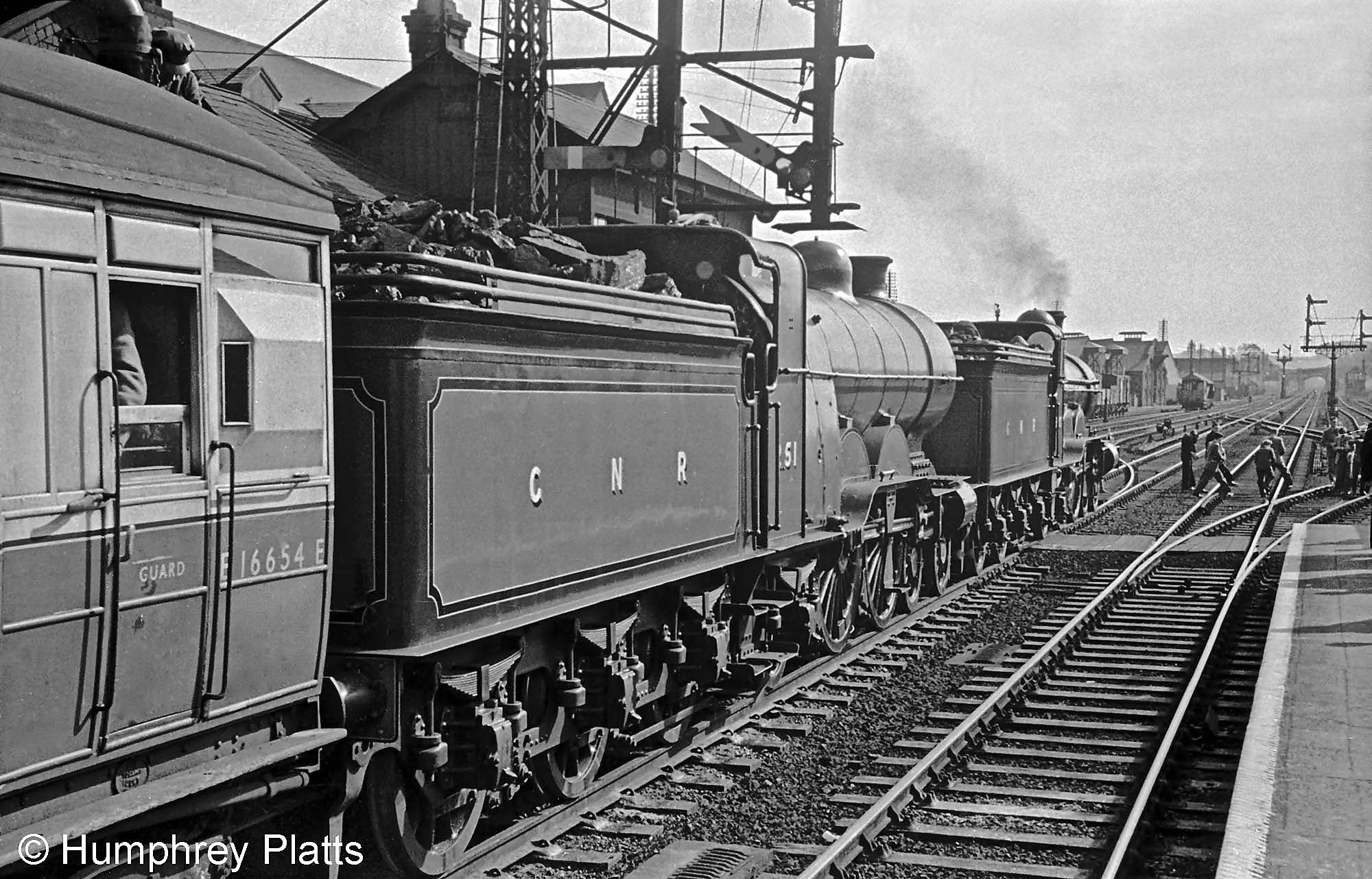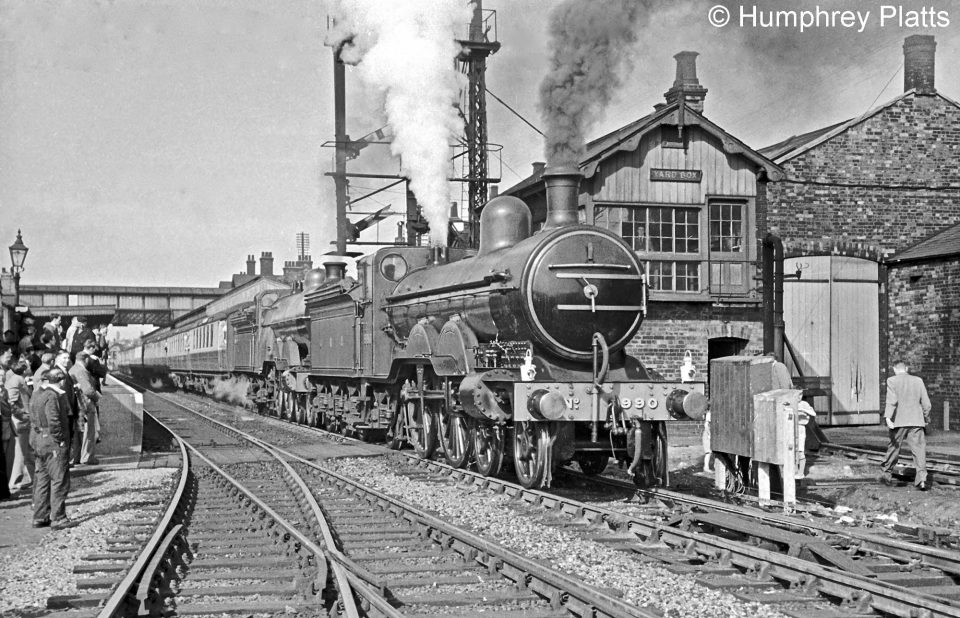photographs by Humphrey Platts
In 1953 Doncaster Locomotive Works, 'The Plant', celebrated its centenary. To mark the occasion two special excursions took place using the preserved Great Northern Railway 'Atlantic' locomotives which were, at the time, normally displayed at the 'old' York Railway Museum. Both engines were designed and built at Doncaster and had been routinely overhauled there while in service.
The first train ran on Sunday 20th September, when the pair brought The Plant Centenarian north from London King's Cross to Doncaster, with a stop at Peterborough.
On the following Sunday The Plant Centenarian ran again, this time between Leeds and King's Cross. It was hauled by the historic 'Atlantics' in the Up direction stopping at Doncaster, Lincoln, Grantham and Peterborough.
On both trips the return leg had the pioneer Class A4 locomotive, No. 60014 Silver Link, in charge.
Humphrey Platts joined an admiring crowd at Grantham station on a bright September Sunday to watch the 'old timers' pause for a few minutes before continuing south.

The special had travelled via Lincoln because of engineering work on the East Coast Main Line north of Grantham. It was good to see the coaches in uniform crimson lake and cream livery with ‘Plant Centenarian’ name boards.

No. 251 was built in 1902, similar to No. 990 but with a much larger boiler, a feature clearly evident in this view. It was the first of the very sucessful GNR large Atlantics which, with 'technical upgrades' were not superseded on East Coast Main Line express work until the 1920s.
The train 'has the road', as indicated by the Up Main line signals above the locomotives and also, in the far distance, near Grantham South signal box. The spectators appear to have free access to the main line tracks! Looking at the track, the keenly observant may detect that No. 251 is standing on modern, flat-bottomed rail while No. 990 ahead is on the approach to points fashioned from bullhead rail. Track upgrading is under way and 'plain line' lengths were often replaced first, leaving the more complicated point and crossing work until later.

No. 990, completed early in 1898 and initially without a name, was the first Atlantic (4-4-2) locomotive built in Britain. The class, ultimately numbering 22 engines, quickly acquired the nickname of 'Klondikes' after the 1896 Gold Rush in the Klondike region of the Yukon. In June 1900 No. 990 received the name 'Henry Oakley'.
When, as No. 3990, the locomotive was withdrawn from service at the end of 1937 it was saved from the scrapyard, restored to a GNR livery and, in January 1938, placed in the LNER's York Railway Museum.
On the right is the end of Departmental vehicle No. DE940409, former Great Northern Railway carriage No. 486 taken out of normal service in September 1949. It was used by the District Motive Power Superintendent, based at Peterborough, as a tool van until June 1965. A signalman or telegraph lad looks down from the open window of the Yard signal box.



Though it has a larger boiler No. 251, behind, is the weaker engine at this point in its career. This is because its restoration 'to original condition' in 1947 involved the removal of superheater elements from the boiler without replacing the large flue tubes, along with the 'undoing' of other modifications applied during its working life which had improved power and efficiency.

Note the transition visible under the leading coach from bull-head rail back to modern flat-bottomed rail. The changes in rail type here may provide a clue to the reason for routing via Lincoln. A programme of track replacement, deferred during the second world war and further delayed by a post-war shortage of high quality steel, was being implemented during the 1950s. Sections of the main line were frequently closed on Sundays to enable the work to proceed.
With grateful acknowledgement to the Six Bells Junction website for detailed information about The Plant Centenarian excursions and the LNER Encyclopedia for locomotive and other details.


Good grief what brilliant photos.